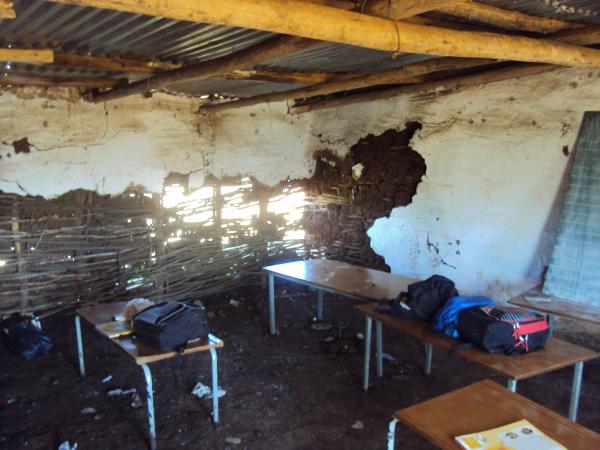Witnessing the difference between a South African and US school

The right to education will not be realised as long as there is such massive inequality between schools across the world.
It’s a normal spring day in the Northwest Suburbs of Chicago. It’s 8 o’clock on a Friday morning at a private high school. Students wearing uniform red and blue sweaters slowly trudge through the various doors located around the huge brick building, trying to shake off the two hours of sleep from the night before. Girls giggle and fix their makeup in front of the bathroom mirrors before class, while boys socialize and talk about the things teenage boys love: football, cars, and girls. When they sit down in their classes of about 20 students each, they all have textbooks, pens, notebooks and expert teachers. The day has started.
Now travel 13,000 kilometres across the Atlantic Ocean to Cape Town, South Africa. It is a seven-hour time difference, so the students are about to leave school for the weekend.
It’s a normal winter’s day in the city; a rainy afternoon at a local high school. Students sit at shared desks, waiting for school to end. Some students sit in the dark, in powerless classrooms of about 30 people. One by one, students walk out of their individual prefabricated classrooms, and leap from the metal step platforms into the cold rain in their navy uniform blazers. Boys hurry in and out of the small bathrooms, as girls avoid using them altogether because of the huge opening in the roof. The rain pours in through the hole, and soaks the huge piles of trash occupying a large section of the bathroom. There is no soap, nor are there any towels, and there is limited toilet paper. The students walk down the wet, muddy path in between all the classrooms, socializing about different things, and disappear down the street into the mist. The day has finished.
I compared my experiences with the extreme stereotypes of each country: the nice, upper-class American high school, and the run-down South African high school. However, if one travels a mere 2-kilometres up the road in certain places, some extremely nice, and very privileged South African high schools can be found. Vice versa, if one travels from my high school to the inner city, south side of Chicago, very poor, dilapidated high schools can be found - high schools that even challenge the conditions of a South African high school.
That being said, educational equality is not only a national issue, it is an international issue. There are elite schools in places, and there are disadvantaged schools in places. From visiting a high school in South Africa, I am now aware of the massive inequality of educational rights that exists in the World. So long as this immense inequality exists, the right to education is not realised, not nationally nor internationally.
Support independent journalism
Donate using Payfast

Don't miss out on the latest news
We respect your privacy, and promise we won't spam you.

This article is licensed under a Creative Commons Attribution-NoDerivatives 4.0 International License.
